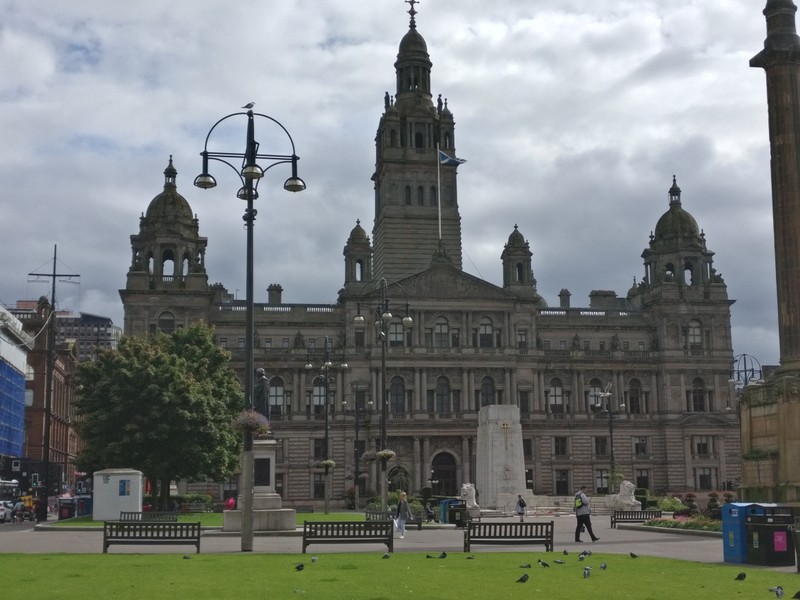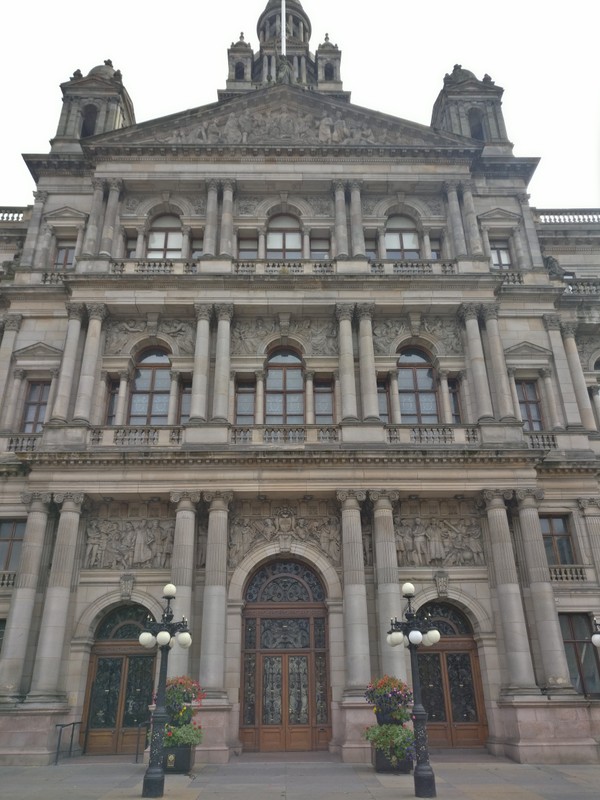City Chambers
Introduction
Text-to-speech Audio
The City Chambers is one of most impressive buildings in Scotland. Completed in 1890 its grandeur reflects what was then the most powerful empire in the world. Great Britain’s economic development was built on trade with her colonies and this is dramatically portrayed in the Chambers’ architecture. On the topmost triangle on the main façade a statue of Queen Victoria is flanked by native peoples bringing gifts from the Empire. Its is a striking symbol of Victorian Glasgow’s claim to be the second city of the Empire. Yet like other major ports on the Atlantic seaboard such as Bristol and Liverpool, much of the city’s early wealth was built on a global trade which ran on slave labour.
By contrast Glasgow’s position as a leading abolitionist city is symbolised by the statue of James Oswald (1785-1853) in George Square. Oswald, who came from a merchant family which had been deeply involved in the tobacco and sugar trades since the 1730s, served as a Glasgow MP from the time of the 1832 Reform Act. In 1836 he supported the petition of 30,000 residents of the city to end the apprenticeship scheme in the West Indies that had continued a form of slavery after its formal abolition by Parliament in 1834.
Images
Glasgow City Chambers

Glasgow City Chambers front face

